If buying a home is on your list of priorities, then finding out how much you may borrow is one of the first steps to take. Lenders often refer to this is as ‘borrowing capacity’ or ‘borrowing power’ and is an amount based on an assessment of your income and expenditure, together with assets and liabilities, including any potential changes to your income and your personal circumstances.
The calculation helps to determine how much you may borrow without placing you under financial hardship. Essentially, by assessing your financial situation the lender has completed its due diligence and assessed if you are in a position to pay back the loan and keep up with your repayments.
 Check your credit history
Check your credit history
Before you even begin the process of finding out your potential borrowing capacity, it’s a good idea to review your credit report to ensure you are in good standing. This article goes into more detail. You can request a free copy of your own credit file from Equifax.
If you have no history of borrowing money (and paying it back), can demonstrate that you are credit worthy by establishing a savings history. Set up a savings account if you haven’t already and make regular deposits. This demonstrates to lenders that you can keep to a financial commitment. The deposits don't even have to be big ones, just putting away 100 dollars a week shows lenders you can commit to a budget and save.
If you do have existing debt (including credit card, personal or car loans and HECS/HELP) pay down as much as possible before applying for a home loan. Also consider reducing the limits on your credit cards, if possible, to minimise the impact to your potential borrowing capacity.
Understanding your borrowing capacity will help you to determine a few things
 Once you know how much you may borrow, you can begin to research the market, set yourself a budget and begin the search for a property within your price range. While it can be nice to ‘browse’ the market before any kind of pre-approval process has begun, it can also lead to disappointment if you end up finding your budget is quite a bit below what you thought. Getting a pre-approval for a loan is a great way to find out your borrowing capacity and will help you to prepare for the next steps of buying a property as:
Once you know how much you may borrow, you can begin to research the market, set yourself a budget and begin the search for a property within your price range. While it can be nice to ‘browse’ the market before any kind of pre-approval process has begun, it can also lead to disappointment if you end up finding your budget is quite a bit below what you thought. Getting a pre-approval for a loan is a great way to find out your borrowing capacity and will help you to prepare for the next steps of buying a property as:
- You will know how much you may borrow.
- You will be able to set a budget for your purchase.
- Your budget will allow you to narrow down your search by helping you to determine the kind of property you can afford in a location which matches your price range.
- You will get a clear idea of how much per month you will need to set aside for your loan repayments. It’s a good idea to begin putting this amount (or more if possible) aside each month well before you commit to a loan, so you get used to having this amount deducted from your disposable income.
Your borrowing capacity may vary depending on the lender
Each lender may assess borrowing capacity differently as determined by their individual lending practices and policies. It is helpful knowing how your borrowing power is calculated.
 How borrowing capacity is calculated
How borrowing capacity is calculated
Lenders calculate your borrowing capacity based on two things, your income and expenses. Let’s break these down:
Income
- Salary - This will include the income from your employment such as your gross salary. This may also include other income streams such as allowances, commissions, or bonuses.
- Investment income – for example income from rental property or a share portfolio
- Government income streams – this includes things like family tax benefit, parental payment and other benefits.
- Some lenders will also consider certain insurance payouts as a form of income to factor into their calculations.
Expenses
 Living expenses
Living expenses- Private health insurance
- Private school fees
- Associated costs with investment properties
- Credit card payments (even if they are at zero, they are potential future debt)
- Existing loan repayments including home loans, personal loans or car loans/leases
- HELP/HECS debts
Lenders will request paperwork to substantiate your income and expense. You will be asked to submit documents such as recent payslips, your most recent tax return, bank statements from all accounts, credit cards or store cards, and investment income details. Your borrowing capacity will also factor in potential interest rate rises to allow capacity for increased payments over the life of the loan.
What's next?
If you’re not quite ready to officially apply for pre-approval with a lender you can still get an idea of your borrowing capacity by using an online borrowing power calculator. While an online calculator will only give you an estimate, it will give you a rough idea of how much you may be able to borrow. The calculator considers your income, your living expenses and any existing loan repayments you might have.
For some more information about how to prepare for purchasing your first home. If you have questions about how to apply for a home loan or want to speak to someone about finding the right home loan for you, Australian Mutual Bank has a range of flexible loans, with competitive fixed and variable loan options, as well as a team of dedicated loans specialists with whom you can discuss your needs.

Alison Gallagher is a freelance writer, resourcefulness expert and entrepreneur. She has been featured in various publications including Stellar Magazine, seasonally.






